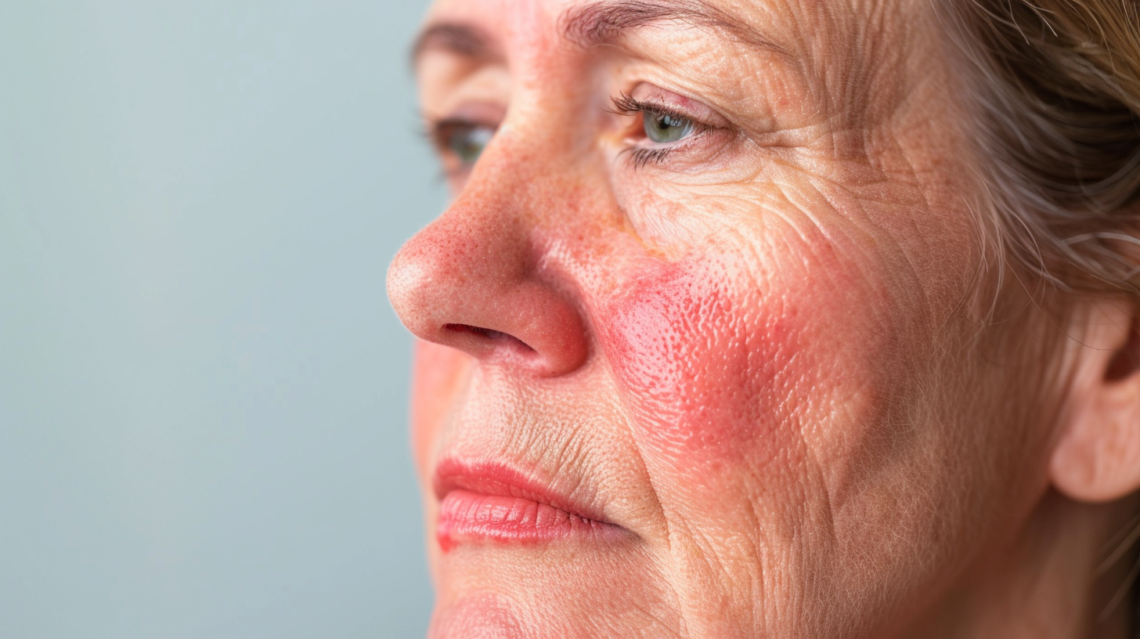
Rosacea Awareness Month
Rosacea, a chronic and often misinterpreted skin condition, has a notable presence within the Canadian demographic, affecting over 3 million individuals across the country. This condition, characterized by its hallmark symptoms of persistent redness, burning, and tingling sensations, primarily manifests across the facial region. Such symptoms are not just superficial but, can delve even deeper, impacting affected individuals on not just physical level, but psychological level too. This only further underscores the necessity for a multifaceted approach towards the management and treatment of rosacea.
The symptoms of rosacea can be intricate and varied. The facial redness that most associate with the condition is just the tip of the iceberg. Many sufferers also report experiencing swelling, the emergence of small, red, pus-filled bumps, and even ocular issues (which can include eye redness and irritation.) These symptoms tend to fluctuate in severity, with periods of exacerbation and remission, thereby adding an unpredictable element to it. The burning and tingling sensations that accompany the redness often serve as a constant reminder of the condition, contributing to its discomfort and, in severe cases, even significant pain.
As mentioned, the impact of rosacea even extends beyond the physical symptoms outlined above, affecting the psychological well-being of those affected. The visible nature of the condition, particularly on the face, can lead to an individual feeling self-conscious and have a diminished sense of self-esteem. In a society where physical appearance holds considerable weight for some, especially in social interactions, individuals with rosacea often find themselves grappling with the unwanted attention that is drawn by their symptoms. This self-consciousness is not unfounded, as studies have highlighted the stigma associated with visible skin conditions (not just rosacea), with individuals reporting various instances of discrimination or misunderstanding based on their appearance. Consequently, the psychological toll of rosacea can be significantly profound, leading to social withdrawal, anxiety, and depression, further compounding the challenges faced by those with this skin condition.
In terms of treatment options, they are varied. There is currently no cure for rosacea – however, there are several different treatment methods available that can help to manage the symptoms of rosacea and improve the quality of life for those impacted by it. The choice of treatment often depends on the severity and subtype of rosacea that is present, often meaning the approach is personalized per patient. Topical treatments, such as metronidazole, are commonly prescribed for mild to moderate cases, and can help reduce inflammation and redness. However, it is worth noting that topical treatments may result in burning or stinging, especially during the first few weeks of use. For more severe cases, oral antibiotics may also be recommended to help control the symptoms. Laser and light therapies have also emerged as effective options for managing the redness and visible blood vessels associated with rosacea, offering a non-invasive solution. Beyond medical treatments, lifestyle modifications also play a pivotal role in managing rosacea. Individuals are encouraged to identify and avoid any potential triggers that may exacerbate their symptoms, which can include certain foods (spicy foods, especially), beverages, extreme temperatures, and exposure to sunlight. The adoption of a gentle skincare routine, along with the use of sun protection, can further help to mitigate the impact of rosacea on one’s daily life.
To learn more, visit rosaceahelp.ca.

